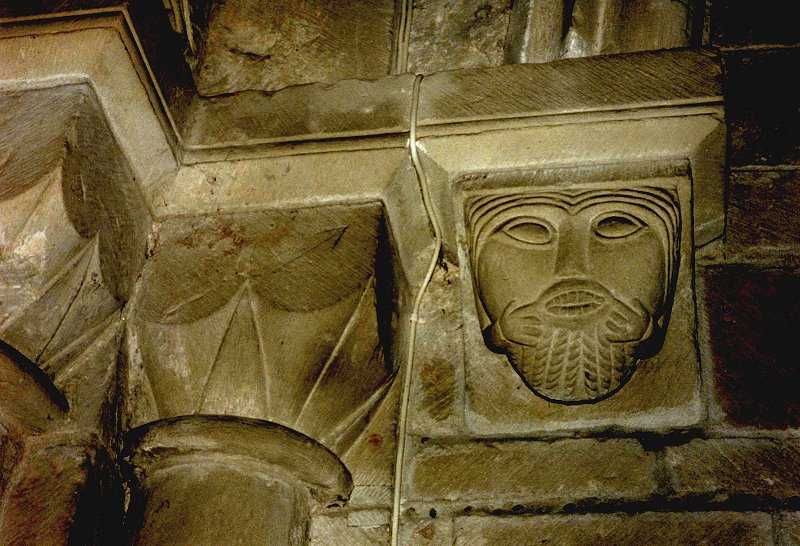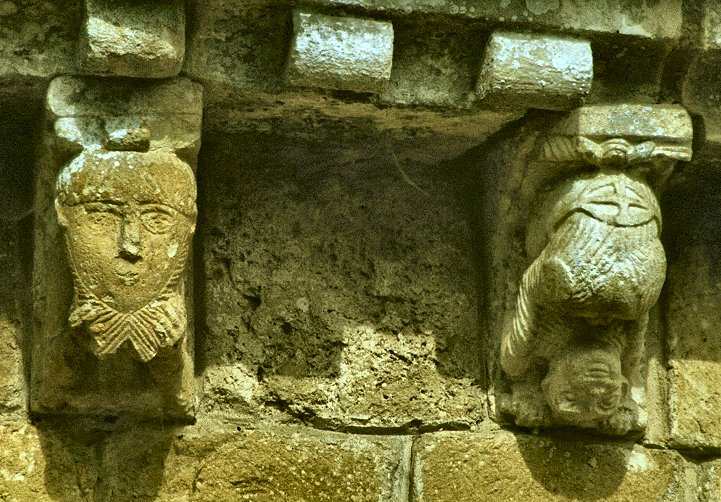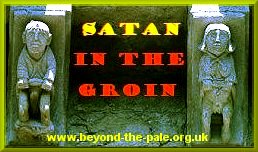Dalmeny Church near Queensferry (Lothian)
This fine Scottish Romanesque church in the best Norman style has some superb
carved heads on corbels and culs-de-lampe.
Mouthpullers (indicating sexual carnality) are amongst the commonest figure-motifs
in Romanesque sculpture, and this is a very fine and
well preserved, bearded example.

Compare with a beard-puller
at Cénac (Dordogne).
More mouth-pullers and tongue-pokers can be seen here.

